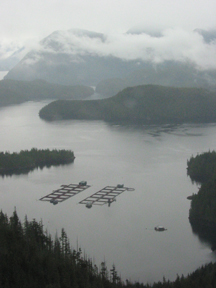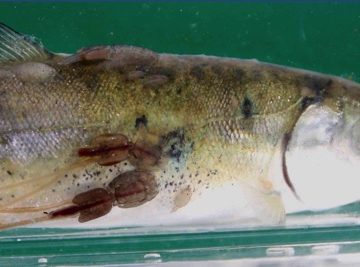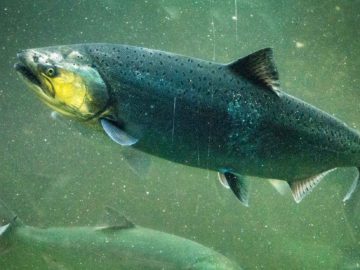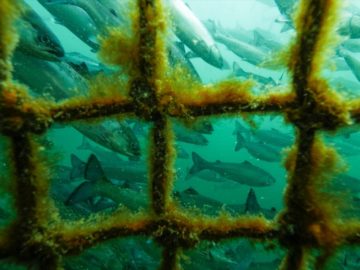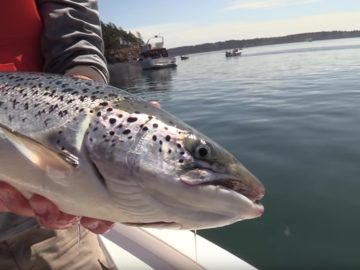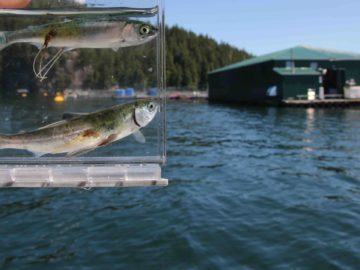By Karen Wristen, SeaChoice Steering Committee member for Living Oceans
The only effective way to protect wild Pacific salmon from salmon farms is to keep farms out of the water – completely.
The Federal government has committed to doing something about open netpen salmon farms in British Columbia in recognition of the risks they pose to wild salmon populations – although exactly what they’ve committed to, and when, became murky after they were elected.
Globally, the salmon farming industry has been forced to experiment with new productions systems because of the rapidly rising cost of controlling sea lice and disease in open netpens. As any industry would, it defaulted to the lowest-cost, highest return approach: the so-called ‘hybrid’ system in which salmon are raised to post-smolt stage in land-based facilities before being placed in the ocean. The theory is that larger fish are less susceptible to dying from diseases and better able to withstand the ravages of sea lice. They spend only one year in the open netpen, rather than 18-24 months, so exposure time to lice and the shared diseases of salmon farms is shorter.
This is perhaps an answer to production cost control, but it’s no answer to protecting wild salmon.
Hybrid systems result in a higher biomass in the netpens throughout the ocean-based part of the production cycle, meaning that more pollution of surrounding waters and more fouling of the ocean floor will occur, unless the system is accompanied by extended fallow periods. The fish on the farms remain a breeding ground for the viruses, bacteria and parasites that plague salmon farms and are readily transferred to wild fish. The farmed fish may withstand the infection and infestation pressure; but the wild salmon, particularly the vulnerable juveniles, continue to be at risk.
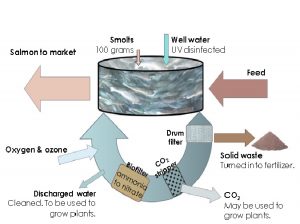
Some companies are already using the hybrid system, which uses recirculating aquaculture technology (RAS) to raise the smolts to about 1 kg weight before putting them into netpens. While this might look like a positive step in the direction of a land-based industry, in fact it is not. Hatchery/nursery facilities for a hybrid system will be located so as to service the locations of netpens, to reduce stress on the post-smolt fish during transfer to the netpens. A full land-based RAS plant would locate closer to markets and transportation hubs. A RAS system for hybrid culture would be sized to grow the fish only to 1 kg of weight, whereas the full growout of fish in RAS requires much greater tank space and additional equipment/capacity. The industry has a limited pool of capital to draw upon, so deciding how and where to invest in land, bricks and mortar is a critical consideration for the future of salmon farming.
The British Columbia Salmon Farmers’ Association has made it clear that its members favour the least-cost control measures: “The hybrid system, which involves extending the amount of time young fish spend in land-based hatcheries before being moved to ocean pens, is particularly promising in the near-term, and something we are actively pursuing.”
The government promised us that it would end open netpen salmon farming in British Columbia by 2025. It would be unwise to wait while salmon farmers invest in new technology that depends on open netpens, before making it abundantly clear that those netpens will be gone within five years. That would be opening up the government to unnecessary claims for compensation. The Minister of Fisheries should be focusing her efforts on creating incentives for fully land-based RAS and making it clear to industry that it invests in alternatives that fail to protect wild salmon at its own peril.
